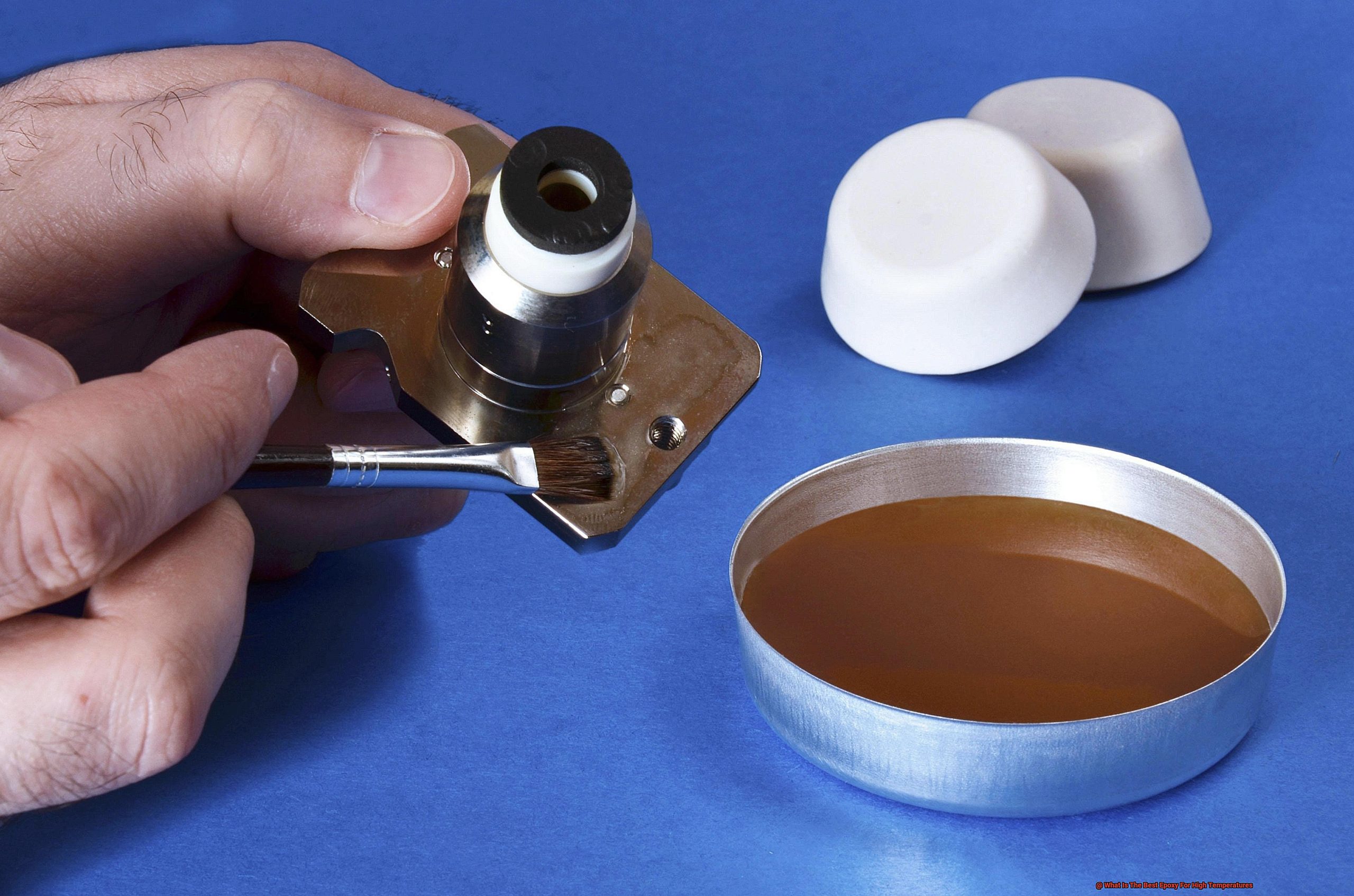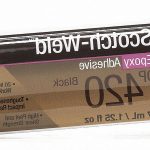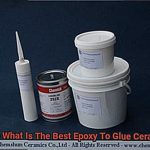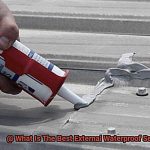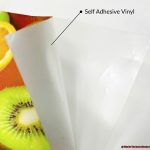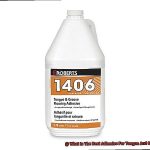Are you tired of using epoxies that crumble under high temperatures? It’s a frustrating experience, isn’t it? You spend time and money on a project, only for it to break down due to heat exposure. But don’t lose hope because there is a solution: the best epoxy for high temperatures.
High-temperature epoxies are specifically designed to endure extreme heat conditions, making them the perfect option for projects that require long-term durability and resistance to temperature fluctuations. However, with so many options available in the market, how do you know which one is the best for your needs?
In this blog post, we’ll explore everything about high-temperature epoxies and give you insights on how to choose the right one.
Firstly, we’ll dive into what high-temperature epoxies are and how they differ from standard epoxies. Next up, we’ll highlight the key factors to consider when choosing a high-temperature epoxy such as its maximum temperature limit, curing time, and application method. We’ll also discuss some of the top high-temperature epoxy products on the market and their unique features.
Whether you’re working on an industrial application or just need an epoxy that can withstand extreme heat conditions, this post will help you make an informed decision and ensure your project stands strong against time. So buckle up and let’s dive into the world of high-temperature epoxies.
Factors to Consider When Selecting the Best Epoxy for High Temperatures
Contents
- 1 Factors to Consider When Selecting the Best Epoxy for High Temperatures
- 2 Phenolic Epoxies
- 3 Silicone-Based Epoxies
- 4 Ceramic-Based Epoxies
- 5 Other Considerations
- 6 Advantages and Disadvantages of Different Types of Epoxy for High Temperatures
- 7 Common Uses of Different Types of Epoxy in High Temperature Applications
- 8 Conclusion
Choosing the right epoxy for high-temperature applications can be a daunting task, but it doesn’t have to be. To ensure optimal performance and durability in your specific application, there are several factors to consider when selecting the best epoxy for high temperatures.
The first factor to consider is the temperature range required for your application. High-temperature epoxies are designed specifically to maintain their properties and structural integrity at high temperatures. It’s crucial to choose an epoxy that can withstand the maximum temperature required for your application to ensure it doesn’t break down or lose its bonding strength over time.
Once you have determined the temperature range required, you should consider the curing time of the epoxy. Longer curing times may be necessary for high-temperature applications to ensure that the epoxy fully cures and maintains its strength at high temperatures.
Another critical factor is chemical resistance. The epoxy must be able to resist exposure to chemicals, solvents, and other substances that may weaken or break down the bond over time. Therefore, it’s essential to select an epoxy that can withstand exposure to the specific chemicals present in your application.
In addition, bonding strength is also an essential consideration when selecting an epoxy for high temperatures. The bond strength should be strong enough to withstand thermal expansion and contraction as well as any other stresses that may be placed on it at high temperatures.
Different types of epoxies offer varying levels of temperature resistance and are suitable for different applications. For instance, phenolic epoxies are known for their exceptional thermal stability and can withstand temperatures up to 500°F (260°C). They are commonly used in industrial settings such as aerospace and automotive industries.
Silicone-based epoxies are highly resistant to heat and can withstand temperatures up to 600°F (315°C) and are often used in electrical and electronic applications where heat resistance is crucial. Ceramic-based epoxies are ideal for even higher temperature applications as they can withstand temperatures up to 2000°F (1093°C) and are typically used in furnace repair or other high-heat industrial settings.
Phenolic Epoxies
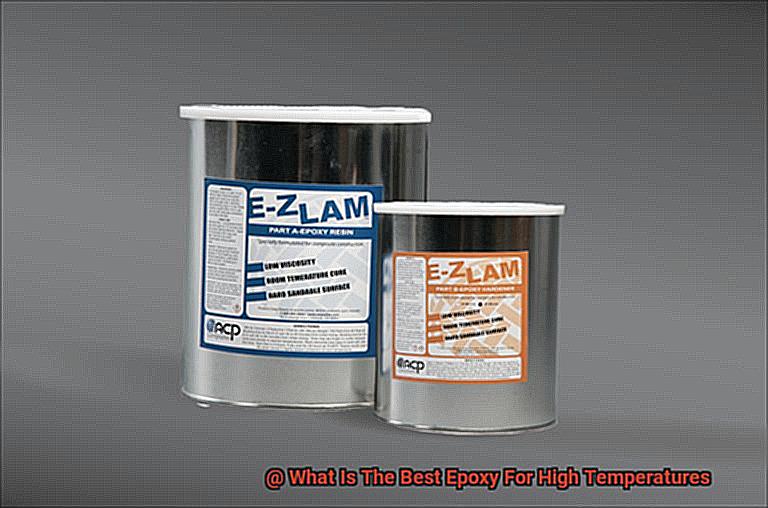
For applications that require an adhesive that can withstand high temperatures and harsh chemicals, phenolic epoxies are the solution. These specialized epoxy adhesives have several features that make them ideal for industrial use.
Firstly, phenolic epoxies can handle temperatures of up to 400 degrees Fahrenheit. This impressive heat resistance means they are perfect for bonding metal parts in high-temperature environments where other adhesives would fail. Additionally, these adhesives offer excellent chemical resistance, making them a top choice for industries where exposure to corrosive substances is common.
But the benefits of phenolic epoxies don’t stop there. They also have outstanding adhesion properties, bonding well with a wide range of substrates like metals, plastics, and ceramics. This versatility means they can be used in a variety of industrial applications, from aerospace components to automotive parts.
Furthermore, the application methods for phenolic epoxies are flexible. They can be applied using a range of techniques: brush, roller, or spray. As two-part systems that require mixing before use, they provide a strong and reliable bond every time.
Silicone-Based Epoxies
Silicone-based epoxies are the superheroes of the adhesive world, providing exceptional strength and durability in harsh environments. These types of epoxies are created by combining silicone resin with epoxy resin, resulting in an adhesive that can withstand temperatures ranging from 392°F to 600°F – making them the perfect solution for high-temperature applications in industries such as automotive, aerospace, and electronics.
One of the main advantages of silicone-based epoxies is their flexibility. Unlike other types of epoxies that become brittle when exposed to high temperatures, silicone-based epoxies maintain their strength and adhesion over time, making them ideal for long-term use in harsh environments. Their chemical resistance is also a significant advantage. They are highly resistant to many chemicals and solvents, making them suitable for use in harsh chemical environments.
However, like any superhero, silicone-based epoxies do have some limitations. They tend to be more expensive than other types of epoxies, which may not make them suitable for all projects. Additionally, their longer curing time can make them less practical for certain applications where a fast cure time is required.
Ceramic-Based Epoxies
While silicone-based epoxies are commonly used, there’s another adhesive superhero in town that deserves just as much recognition: ceramic-based epoxies.
These exceptional epoxies are the ultimate solution for environments where extreme heat is a constant concern. With the capacity to endure temperatures up to an impressive 2000°F, they are ideal for use in demanding industries such as aerospace, automotive manufacturing, and heavy machinery.
One of the key benefits of ceramic-based epoxies is their exceptional thermal conductivity. Thanks to the ceramic fillers in these epoxies, they can dissipate heat more effectively than other types of adhesives. This property makes them perfect for bonding and repairing parts and components that generate high amounts of heat. Whether you’re dealing with an exhaust system or an engine block that gets incredibly hot, a ceramic-based epoxy will ensure a secure and durable repair.
But wait – there’s more. These epoxies also possess outstanding resistance to chemical degradation. They can withstand harsh chemical environments, resist corrosion and erosion caused by chemical exposure or abrasive materials, and can even handle extreme weather conditions such as high humidity or temperature fluctuations.
When selecting a ceramic-based epoxy, it’s crucial to consider the specific requirements of your application. Some epoxies may be better suited to certain chemicals or have higher thermal conductivity than others. But with a bit of research, you can find the perfect product that meets your needs.
Other Considerations
When it comes to selecting the best epoxy for high temperatures, it’s not just about the temperature range. As an expert in the field, I have identified several other important considerations that can impact the performance and safety of your epoxy.
First and foremost, the type of substrate you will be applying the epoxy to is critical. Not all epoxies are created equal and some may work better on metals versus plastics or ceramics. Selecting an epoxy that is compatible with your specific substrate will ensure optimal performance.
Another significant consideration is the cure time and strength of the epoxy. While some epoxies may have a longer cure time, they often result in a stronger bond. Conversely, epoxies that cure quickly may have a weaker hold. Depending on your specific needs, you’ll want to find an epoxy that balances cure time and strength.
Safety is also paramount when working with epoxies. Some products emit fumes or cause skin irritation, which can present health hazards. To minimize risk, consider choosing epoxies labeled as “low odor” or “non-toxic.”
Lastly, don’t forget to think about the application method and process. Some epoxies require specialized equipment or mixing for proper application, while others are more straightforward. Choosing an epoxy that fits within the capabilities and resources of your application process will make for a smoother and more efficient process.
Advantages and Disadvantages of Different Types of Epoxy for High Temperatures
High-temperature applications require epoxies that are specifically designed to withstand extreme temperatures and harsh environments. In this article, we will explore the advantages and disadvantages of different types of epoxy for high temperatures to help you select the right one for your project.
Phenolic Epoxy
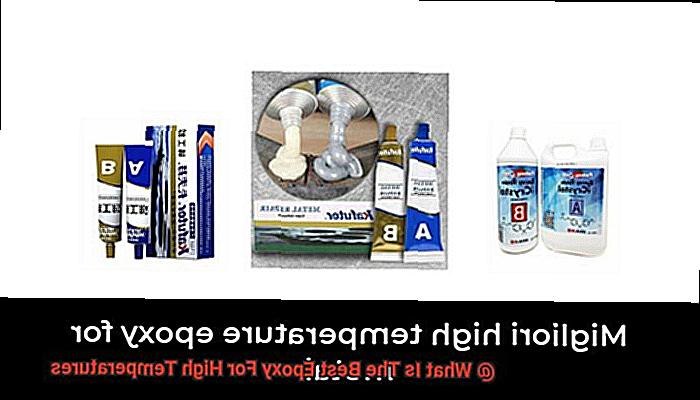
Phenolic epoxy is an excellent choice for applications that require high-temperature resistance, fire resistance, and smoke resistance. It is commonly used in aerospace and aviation industries because it can withstand extreme temperatures and harsh environments. Phenolic epoxy has excellent adhesion properties, making it perfect for bonding metal components. However, it has a relatively short pot life, which means that it hardens quickly once mixed, making it challenging to work with for larger projects. Additionally, phenolic epoxy may not be suitable for applications that require flexibility as it can be brittle.
Silicone Epoxy
Silicone epoxy is another type of epoxy that is highly resistant to heat, chemicals, and water. It can withstand temperatures of up to 600 degrees Fahrenheit and has excellent adhesion properties. Silicone epoxy is ideal for bonding materials such as glass and ceramics. However, it can be challenging to work with due to its thick consistency, which may require specialized equipment. It also takes longer to cure than other types of epoxy, which can be problematic when working on time-sensitive projects.
Ceramic-Based Epoxy
Ceramic-based epoxy is designed to withstand extremely high-temperature environments of up to 2000 degrees Fahrenheit. It is commonly used in furnace repairs and other high-heat industrial settings. Ceramic-based epoxy has excellent thermal stability, but its adhesion properties are lower compared to other types of epoxy, making it less suitable for some applications.
Polyimide Epoxy
Polyimide epoxy is another type of high-temperature epoxy that has excellent thermal stability and resistance to chemicals. It is commonly used in aerospace and electronics applications because it can withstand extreme temperatures and harsh environments. However, polyimide epoxy can be difficult to work with, requiring specialized equipment for proper application.
Polyurethane Epoxy
Polyurethane epoxy is an excellent choice for applications that require strength and flexibility. It has excellent resistance to heat and chemicals, making it ideal for high-temperature environments. Polyurethane epoxy is often used in applications where there may be movement or vibration. However, it can be quite expensive compared to other types of epoxy, making it less suitable for some projects.
Conclusion
Common Uses of Different Types of Epoxy in High Temperature Applications
Epoxy is a versatile adhesive that can withstand high temperatures, making it an ideal solution for various industries such as aerospace, automotive, and electronics. To select the best epoxy for specific needs, it’s important to understand the common uses of different types of epoxy in high temperature applications. Here are five sub-sections explaining these common uses:
Phenolic Epoxies:
Phenolic epoxies are known for their excellent thermal and chemical resistance, making them ideal for high temperature applications such as lining tanks, pipes, and valves in chemical processing plants, refineries, and power plants. These epoxies can withstand harsh chemicals and high temperatures, ensuring long-lasting protection for industrial equipment.
Novolac Epoxies:
Novolac epoxies have increased resistance to acids and other chemicals, making them ideal for lining industrial floors, secondary containment areas, and tank linings in high temperature applications. These epoxies provide excellent protection against chemical spills and protect floors from wear and tear.
Silicon Epoxies:
Silicon epoxies offer excellent thermal stability and electrical insulation properties, making them ideal for encapsulating electronic components, transformers, and motors in high temperature applications. These epoxies ensure that electronic components are protected from harsh environments, ensuring their longevity.
Ceramic Epoxies:
Ceramic epoxies are known for their exceptional thermal conductivity and wear resistance, making them ideal for coating furnace walls, pipes, and heat exchangers in high temperature applications. These epoxies can withstand extreme temperatures and protect equipment from wear and tear caused by high-temperature environments.
Hybrid Epoxies:
Hybrid epoxies combine the properties of two or more types of epoxies to provide a unique set of characteristics suitable for specific high temperature applications. For example, they are often used in aerospace and automotive industries for engine components and exhaust systems that require both thermal and chemical resistance.
XObmZIbHOzY” >
Conclusion
In conclusion, selecting the right epoxy for high-temperature applications is paramount to ensure durability and resistance to temperature fluctuations. When choosing an epoxy, it’s essential to consider factors such as temperature range, curing time, chemical resistance, bonding strength, and application method.
Phenolic epoxies are a top choice for applications requiring adhesive capable of withstanding high temperatures and harsh chemicals. For those seeking exceptional strength and durability in harsh environments, silicone-based epoxies are ideal but tend to be more expensive. Ceramic-based epoxies are perfect for environments where extreme heat is a constant concern while polyurethane epoxy is an excellent choice for applications that require both strength and flexibility.
It’s also crucial to understand the common uses of different types of epoxy in high-temperature applications. Phenolic epoxies are commonly used in chemical processing plants, refineries, and power plants. Novolac epoxies are ideal for lining industrial floors, secondary containment areas, and tank linings. Silicon epoxies are used for encapsulating electronic components while ceramic epoxies are used for coating furnace walls. Hybrid epoxies combine the properties of two or more types of epoxies to provide a unique set of characteristics suitable for specific high-temperature applications.
By taking into account these factors when selecting an epoxy, you can ensure optimal performance and safety in your application. Whether you need an adhesive that can withstand extreme temperatures or harsh chemicals or one that offers exceptional strength and durability in harsh environments, there is an epoxy out there that will meet your needs.

